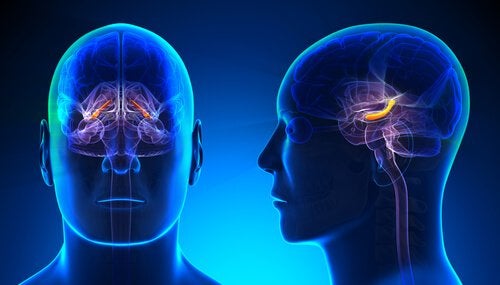Cognitive processes such as learning and memory are crucial for humans. The hippocampus plays an important role in these processes; is one of the regions that make up the formation of the hippocampus.
The formation of the hippocampus is a prominent C-shaped structure. It lodges on the ground part of the lateral ventricle of the brain. The hippocampus consists of three main runners-up (CA1 to CA3), but is the formation of the hippocampus limited exclusively to the hippocampus?
- In the 16th century.
- The anatomist Arantius (2) spoke for the first time about the appearance of the formation of the human hippocampus.
- Called it the hippocampus.
- Which derives from the Greek word for seahorse.
However, the formation of the hippocampus is not limited to the hippocampus alone; the formation of the hippocampus also includes the dented convolution, the subicular complex and the entorrinal cortex.
Thus, the formation of the human hippocampus has an area of about five centimeters, in its central part we can find the only one. It has the shape of a paw and varies from brain to brain.
If its position in relation to the callous body is accounted for, the hippocampus can be divided into three parts: preobsthetric, supracomisural and retrocomisural.
The dented convolution forms the medial part of the cerebral cortex. At the cytoarquotonic level, toothed convolution is a trilaminated cortical region; however, in the formation of the hippocampus, it forms a typical C-shaped structure that is ventrally separated from the first part. of the hippocampus and the subiculum by the crack of the hippocampus.
The main cell layer of this structure is filled with granular cells. The spiny dendrites of these cells branch into the dented molecular layer. Granular cells and molecular layers together represent the dented fascia.
The third innerst layer of the dented circumference is called a polymorphic layer or yarn. Near it, part of the pyramidal cell layer is surrounded by the granular cell layer.
The hippocampus can be divided into three fields: CA1, CA2 and CA3. These fields have mainly one layer of cells: the pyramidal cell layer. The surface boundary with ventricular light is formed by the axons of pyramidal cells and is called alveoli. Historically, the division of this region has been composed of:
The lucid layer of CA3 is composed of fibers that form synapses with proximal dendrites in a layer of pyramidal cells. The CA2 layer is relatively compact. In addition, it has a layer of pyramidal cells whose edges are difficult to determine.
The CA1 layer, on the other hand, is a subfield of the hippocampus (3). The pyramidal cell layer in this region can be subdivided into an outer layer and an inner layer.
The CA1 layer and subiculum overlap at its edges, forming a transition zone, the subticle can be divided into the following layers:
The term “entorrinal bark” is synonymous with the Brodmann region. It extends rostrally towards the middle part of the amygdala and flows to the anterior boundary of the lateral genitored nucleus.
This area is organized into slides. However, this organization is slightly different from the other areas that make up the brain: six layers can be distinguished.
The connectivity of hippocampus information follows a one-way glutamatergic path (excavator) that is part of a closed circuit. In this intrinsic chain of connections, the dented convolution is very important, as it receives most of the information transmitted by the entorrinal cortex.
The extrinsic hippocampal circuit consists of
Therefore, it appears that the hippocampus receives sensory information from various cortical regions.
These projections are mainly used to introduce sensory information into the formation of the hippocampus.
Fimbria and formal fornithx are part of the classic efferent hippocampus formation system, in addition, there are large connections between the formation of the hippocampus and the amygdala, so other subcortical projections for the formation of the hippocampus are those that include the medial septal complex. Finally, the connections that occur between the formation of the hippocampus and the hypothalamus are established by the subiculum.
Therefore, we have seen that the formation of the hippocampus is a complex set of areas that include the hypothalamus. Although most of the research has been done on animals, it seems logical that the regions described here also form the formation of the human hippocampus.

